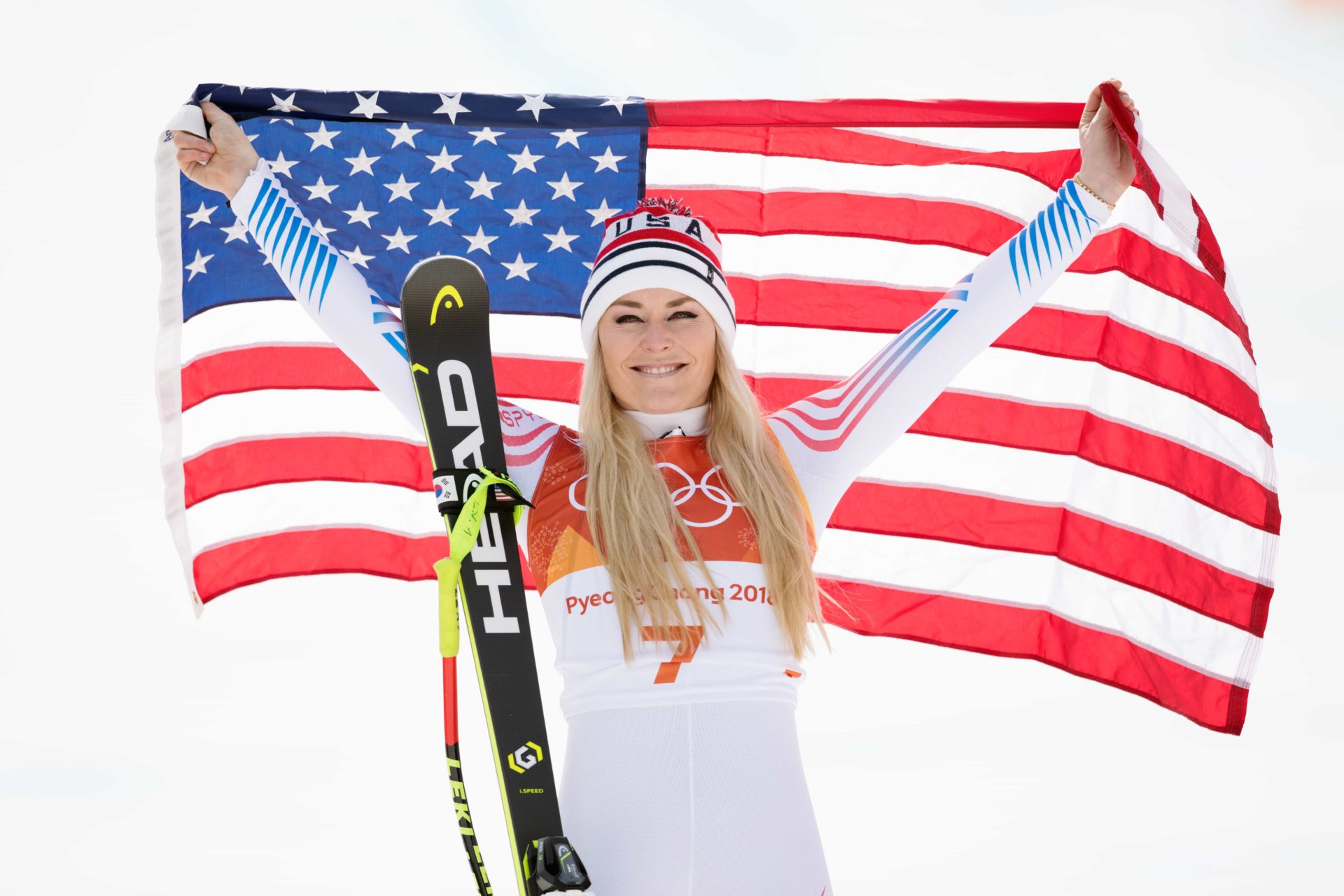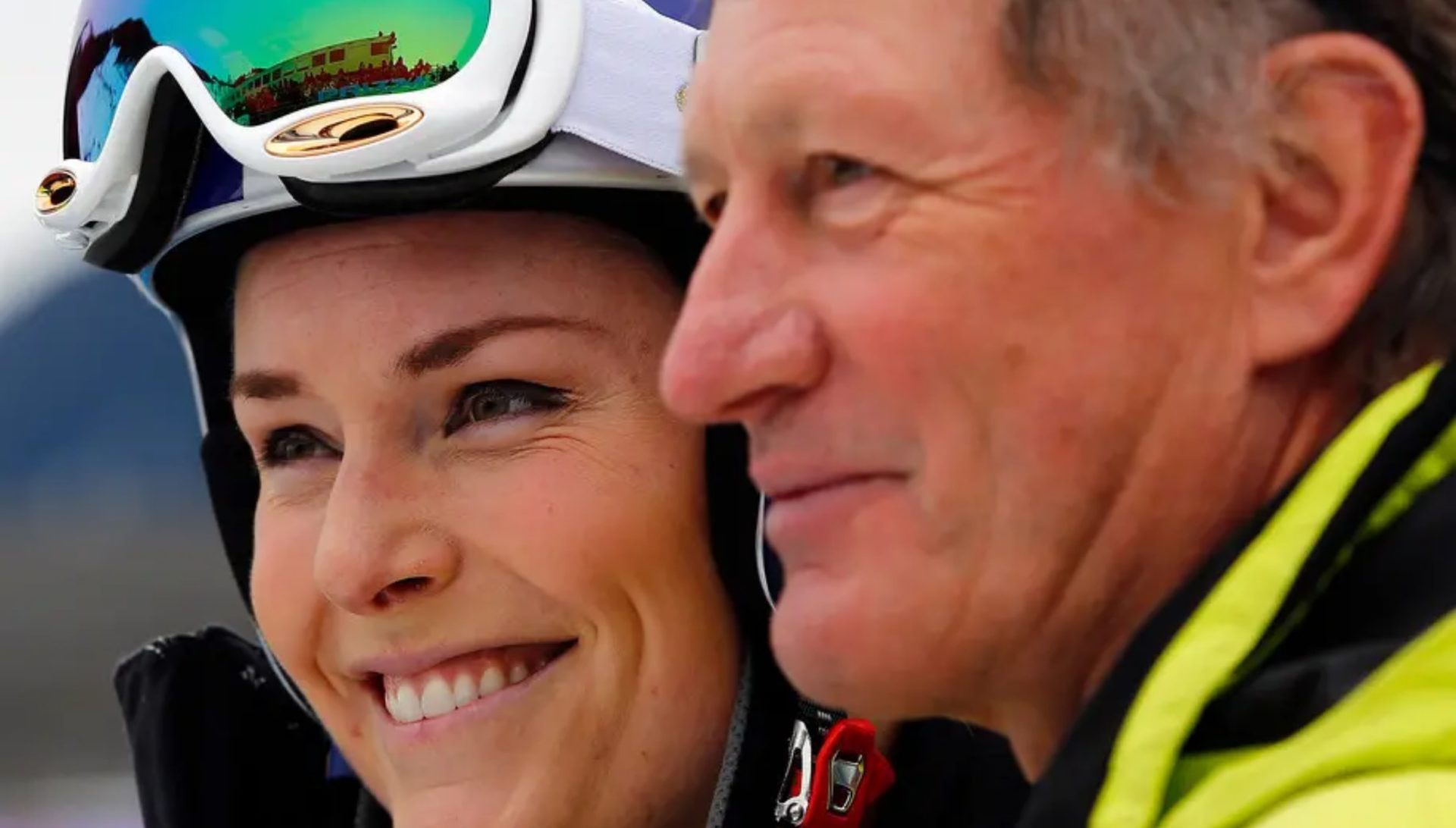
U.S. Ski & Snowboard today announced the official comeback of skiing legend Lindsey Vonn to the Stifel U.S. Ski Team. Vonn’s decision to return to competitive ski racing comes after a successful knee replacement surgery in April this year after recurring issues had plagued the 40-year-old athlete following several injuries during her active racing career. What exactly this decision will entail remains to be seen at this point. The U.S. ski racer announced on her social media account that she is returning to Colorado after having been spotted training in several European locations, which initially sparked an unconfirmed rumor about the American skier competing at Sölden, Austria.
Vonn retired five years ago after a slew of injuries that left her with knee pain that required several follow-up surgeries. A total knee arthroplasty (TKA), the medical term for a knee replacement surgery, was successful in April of this year and finally left the athlete pain-free. The surgery was performed by James Roche, MD, from Florida, a specialist in knee replacement surgeries. During a TKA, parts of the damaged knee are replaced with implants. In Vonn’s case, titanium implants were used, which are softer and more flexible than cobalt chrome implants. Vonn had the preparatory work done for the TKA in October 2023 by Thomas Hacket, MD, a world-renowned orthopedic surgeon from Vail, Colorado.
Vonn’s return to competitive skiing has been made possible through the introduction of a wildcard by the International Ski and Snowboard Federation (FIS) for Alpine World Cup races. FIS included the surprise entry option for retired champion skiers this July, enabling retired athletes to enter World Cup races provided they had won a FIS World Cup Overall season title or an Olympic Gold Medal or World Championship Gold Medal. Alternatively, winners of a World Cup event season title, such as Downhill, Super-G, Giant Slalom, or Slalom, also qualify, provided they have won a minimum of five World Cups. As a final condition, the athlete who requests a wildcard must be retired from the FIS World Cup for a minimum of two and a maximum of 10 years. Lindsey Vonn fulfills all of these conditions, having won 82 World Cup titles, four Overall season titles, an Olympic Gold, and two World Championships, making her one of the most successful skiers ever.
Reactions to the announcement on social media have been mostly positive. Team colleague Bella Wright stated, “Lindsey is someone who has really been there for me throughout my time on the World Cup circuit. I never got the opportunity to be Lindsey’s teammate in the past, so the opportunity to ski alongside her is extremely exciting! I can’t wait to see what the U.S. women can do this season.”
Retired U.S. ski racer Ted Ligety said in an interview with SnowBrains, “She finished because of injury, because she was so broken. But she felt like she left a lot on the table.” Ligety admits, “Downhill the consequences are high. What she is doing is beyond my risk tolerance, but I think she could be pretty strong actually still.”
Skeptics, such as retired Austrian ski racer Franz Klammer, point to the high injury risk of Downhill and Super-G racing. In an interview with the Austrian newspaper Krone, Klammer, who won the 1976 Olympic Gold in Downhill and 25 World Cup Downhill races, did not mince words, stating, “If she does stage a comeback, she is crazy!” Klammer reminisces about U.S. ski racer Bill Johnson, who tried a comeback at age 40, which ended in a life-altering injury after Johnson crashed during training and suffered devastating brain injuries.

1970 and 1972 Downhill World Champion Bernhard Russi is equally cautious, saying that, in his opinion, a comeback at 40 is a “no-go.” The retired Swiss skiing legend said in an interview with Swiss newspaper Blick in October, “It is ridiculously dangerous. She has no chance! She always skied a high-risk style when she was at her peak. How is that supposed to work now? It’s too risky,” pointing to the pressure on the knee in high-speed jumps on an icy race course where any crash will come at the risk of devastating injuries.
Slightly more diplomatic but equally concerned was Germany’s Felix Neureuther, who explained, “It’s a huge difference whether you want to make a comeback in Slalom and Giant Slalom like Hirscher or in Downhill and Super-G like Vonn. At those speeds… the jumps with an artificial knee joint…,” the retired German ski racer come TV commentator shrugged, “…that’s tough!”
The fact is that regardless of personal opinions, Lindsey Vonn is entering unchartered territory as studies about knee replacement surgeries in fit, young adults are essentially non-existent. Most TKA procedures are undertaken in older and overweight individuals, not enabling a direct comparison. Vonn’s quick recovery time post-surgery and return to full training on snow have shown that Vonn does not fall into the existing recovery statistics from knee replacement surgery. Furthermore, recent studies have shown that muscle tone in individuals who train consistently does not decrease until age 60. Previous studies that described a loss in muscle mass past the age of 35 were conducted without considering people’s exercise regimes. It has been proven that athletes who train continuously do not experience the loss in muscle mass that inactive individuals experience.
In addition, in the last 20-30 years, ski racing athletes’ fitness training has shifted toward sport-specific, multidisciplinary training programs that focus on explosiveness, balance, and injury prevention, tailored to the unique demands of modern alpine racing. Functional strength training has become part of athlete’s daily programs, especially during the off-season, which used to be much less structured in the 20th century. Balance and coordination work and prehabilitation to strengthen ligaments, tendons, and stabilizing muscles have emerged as key elements of modern training for winter sports athletes. Recovery protocols, such as cryotherapy, compression therapy, and mobility training, have become central to their regimen. These innovations have collectively produced stronger, faster, and more resilient athletes, enabling them to excel in the increasingly demanding conditions of modern ski racing. The overall fitness level of current ski racing athletes is not comparable to athletes from 20 years ago, including Bill Johnson.
If Vonn can return to the World Cup and demonstrate that women at age 40 can peak performance in skiing, it would be groundbreaking and advance sports scientists’ understanding of performance past the age of 30-35. Not only would it inspire other athletes, but it would also cause a rethinking of current age perceptions and expectations for elite athletes.
